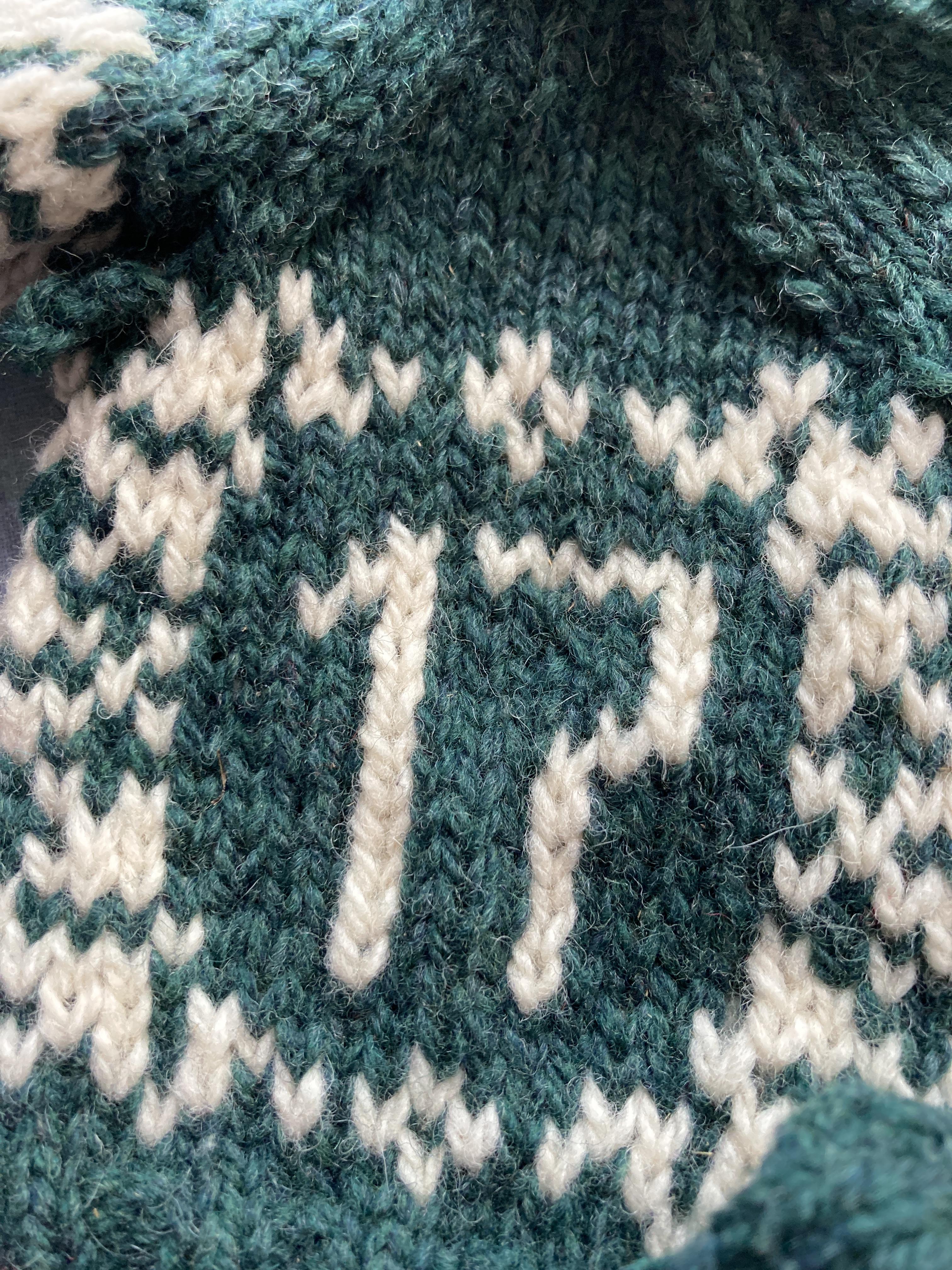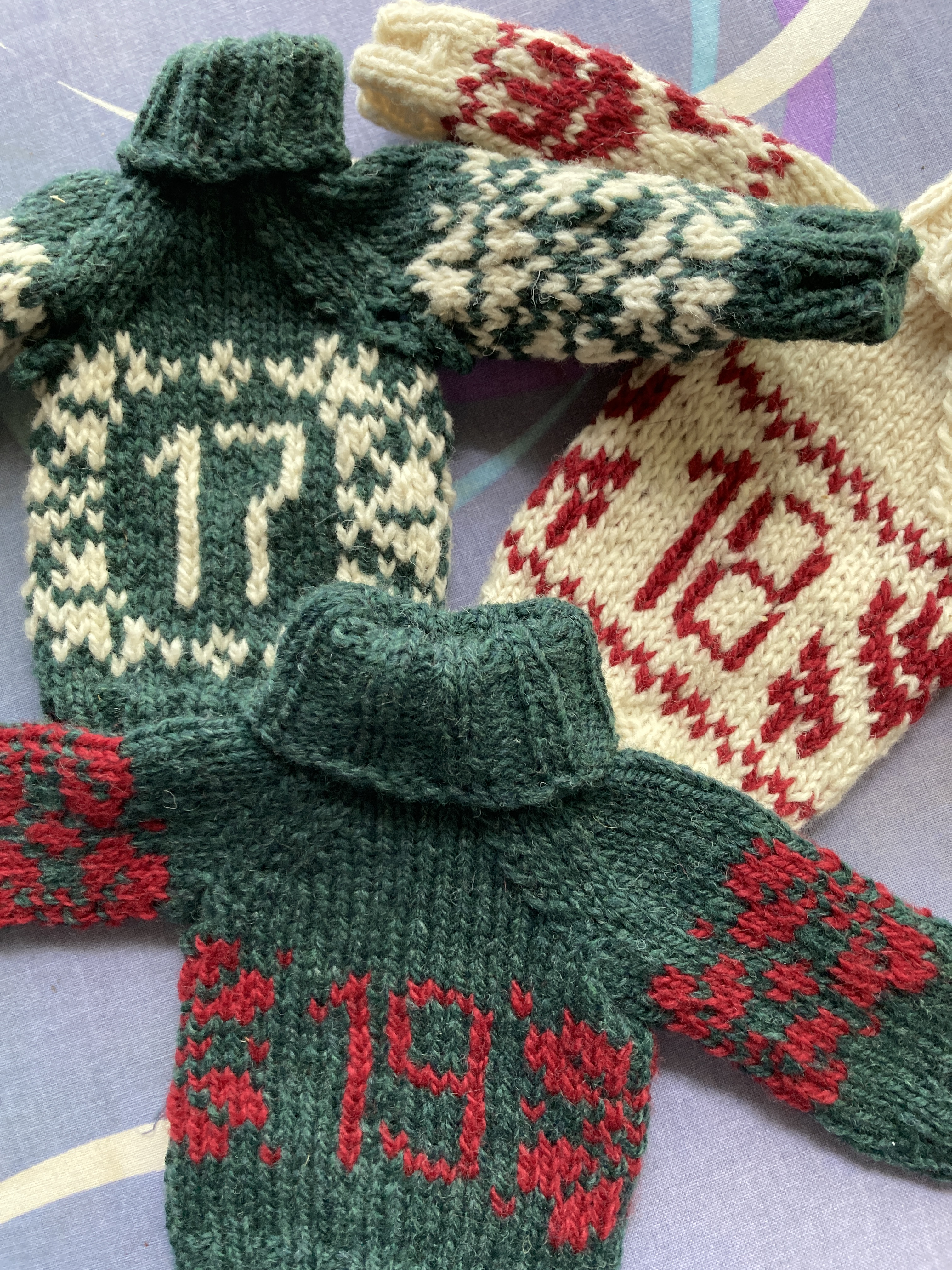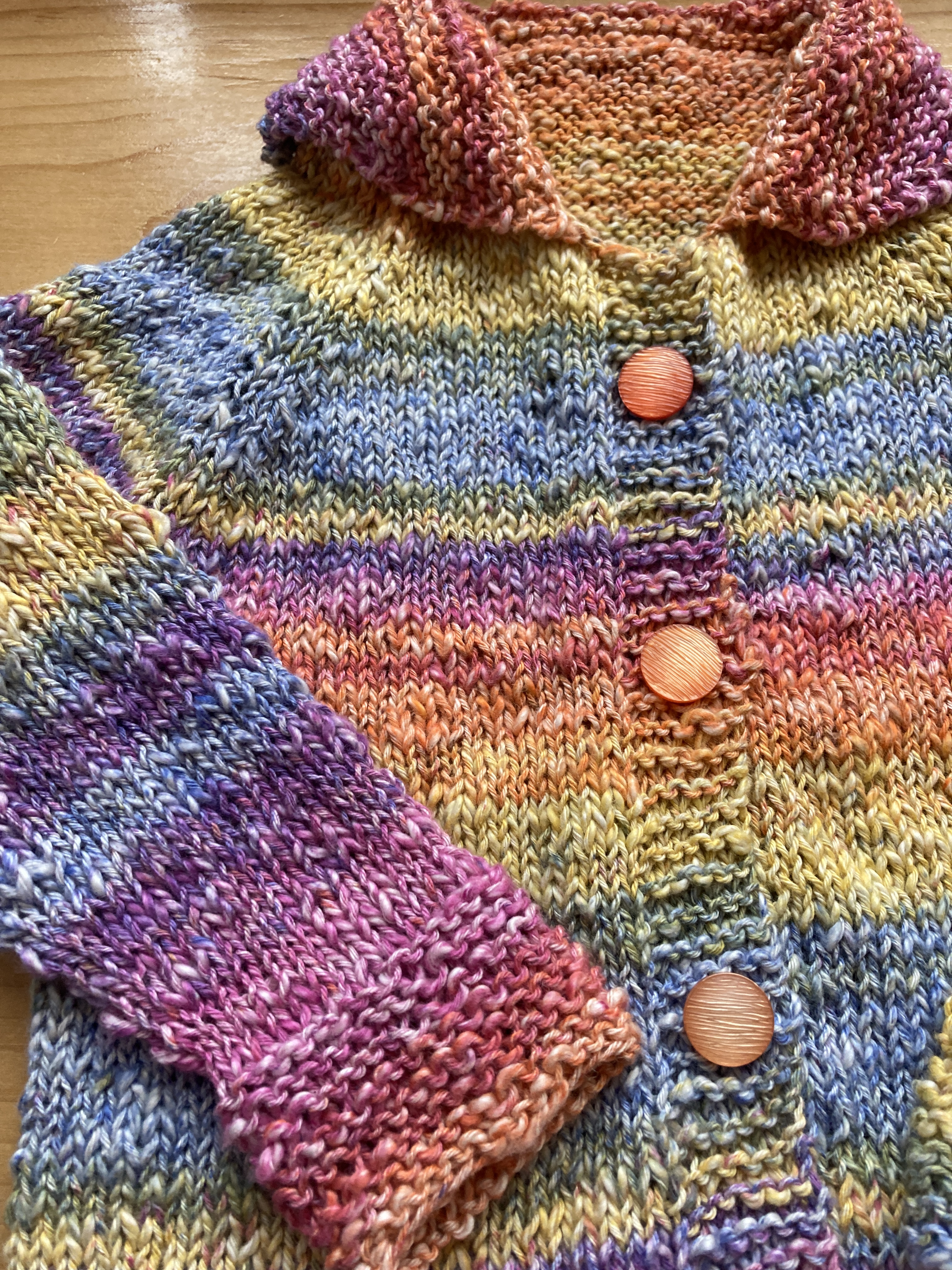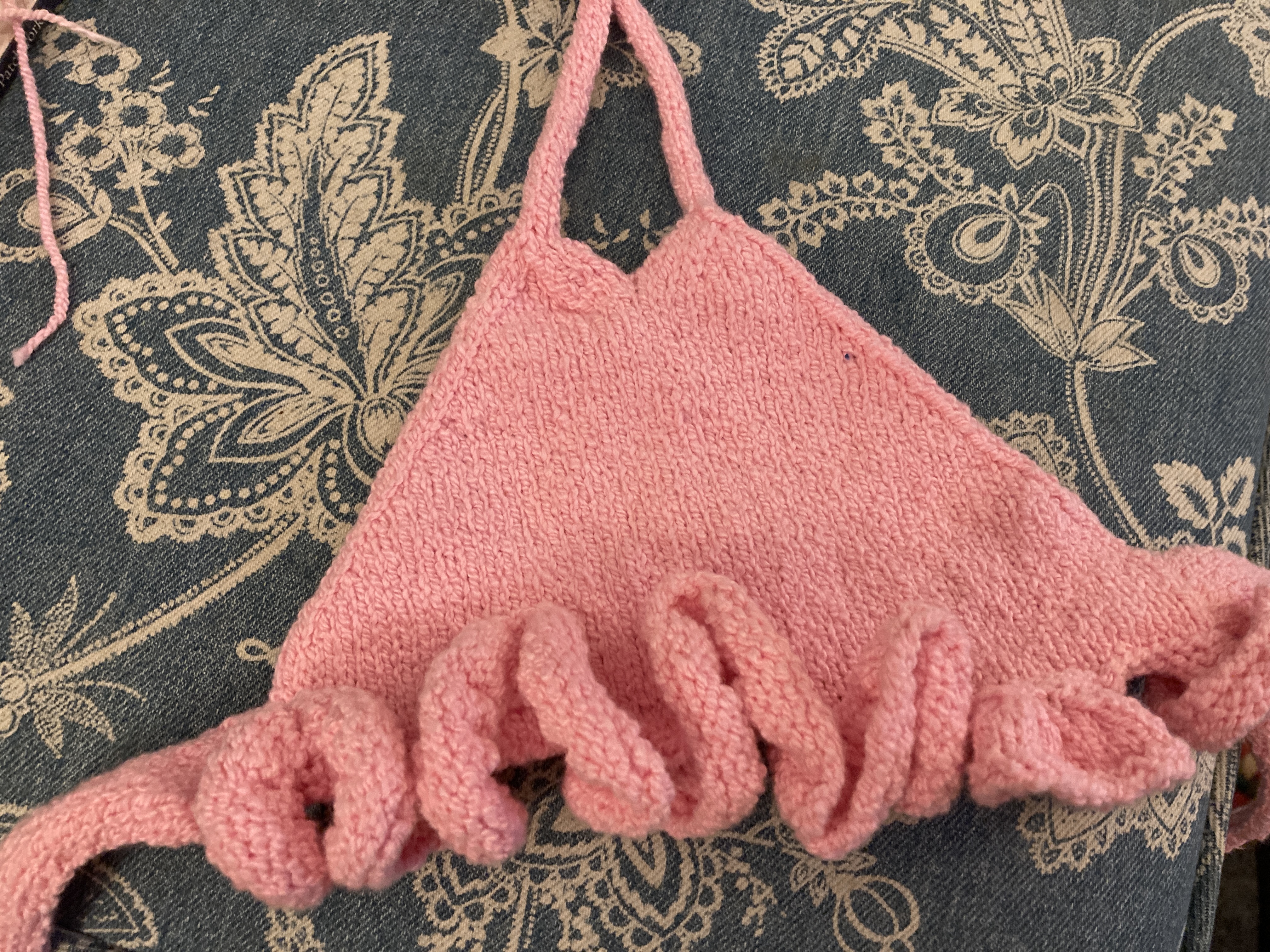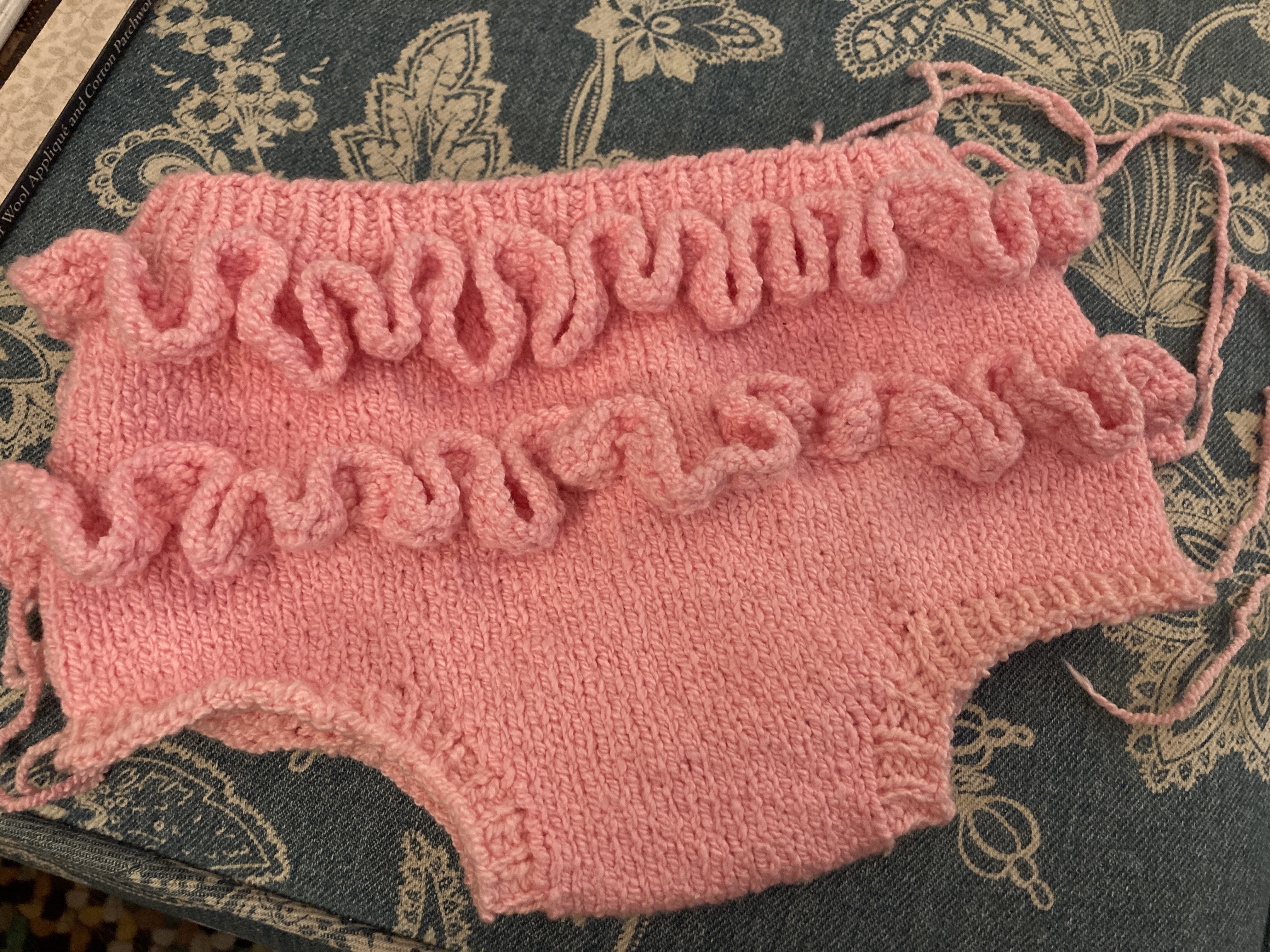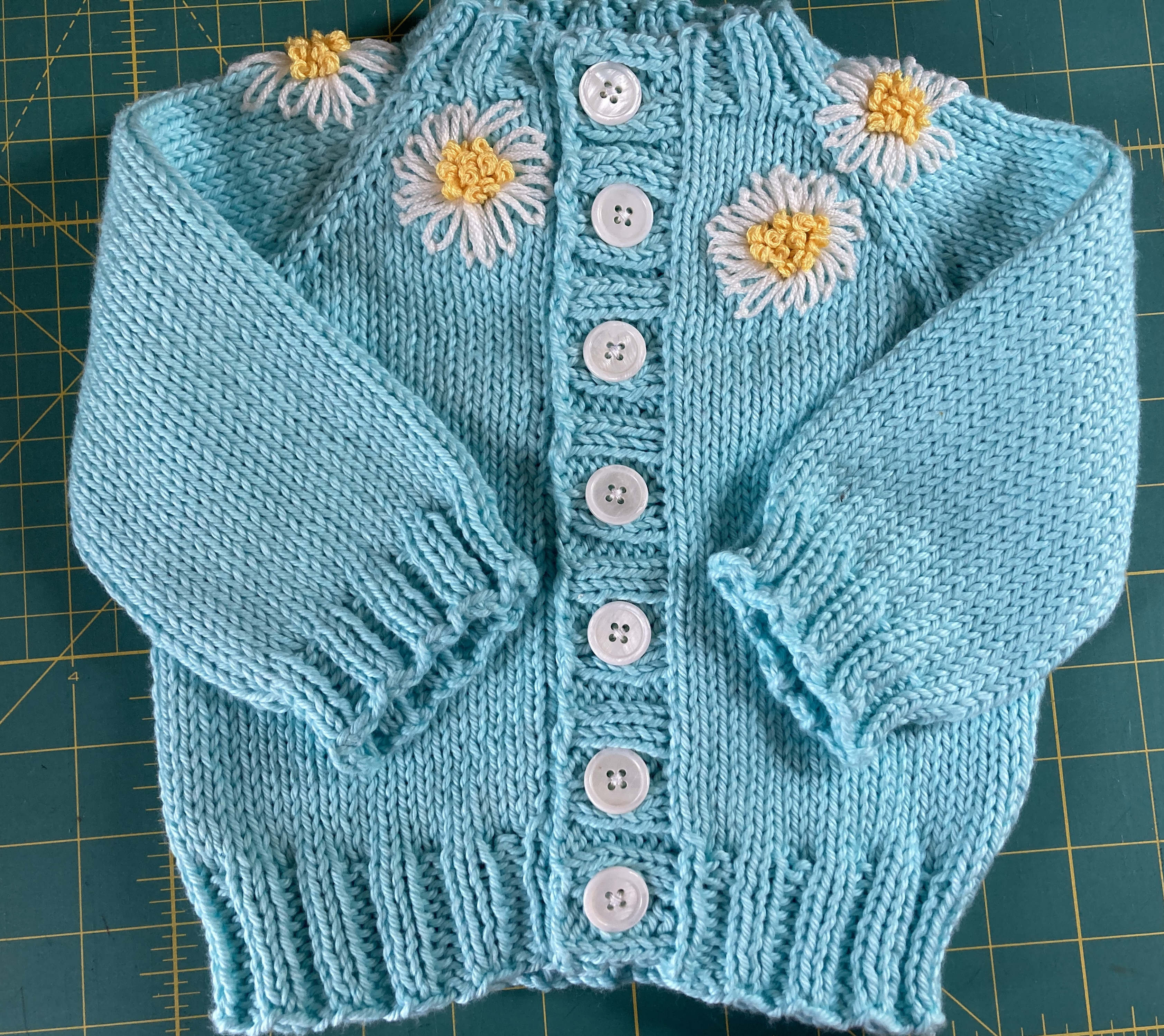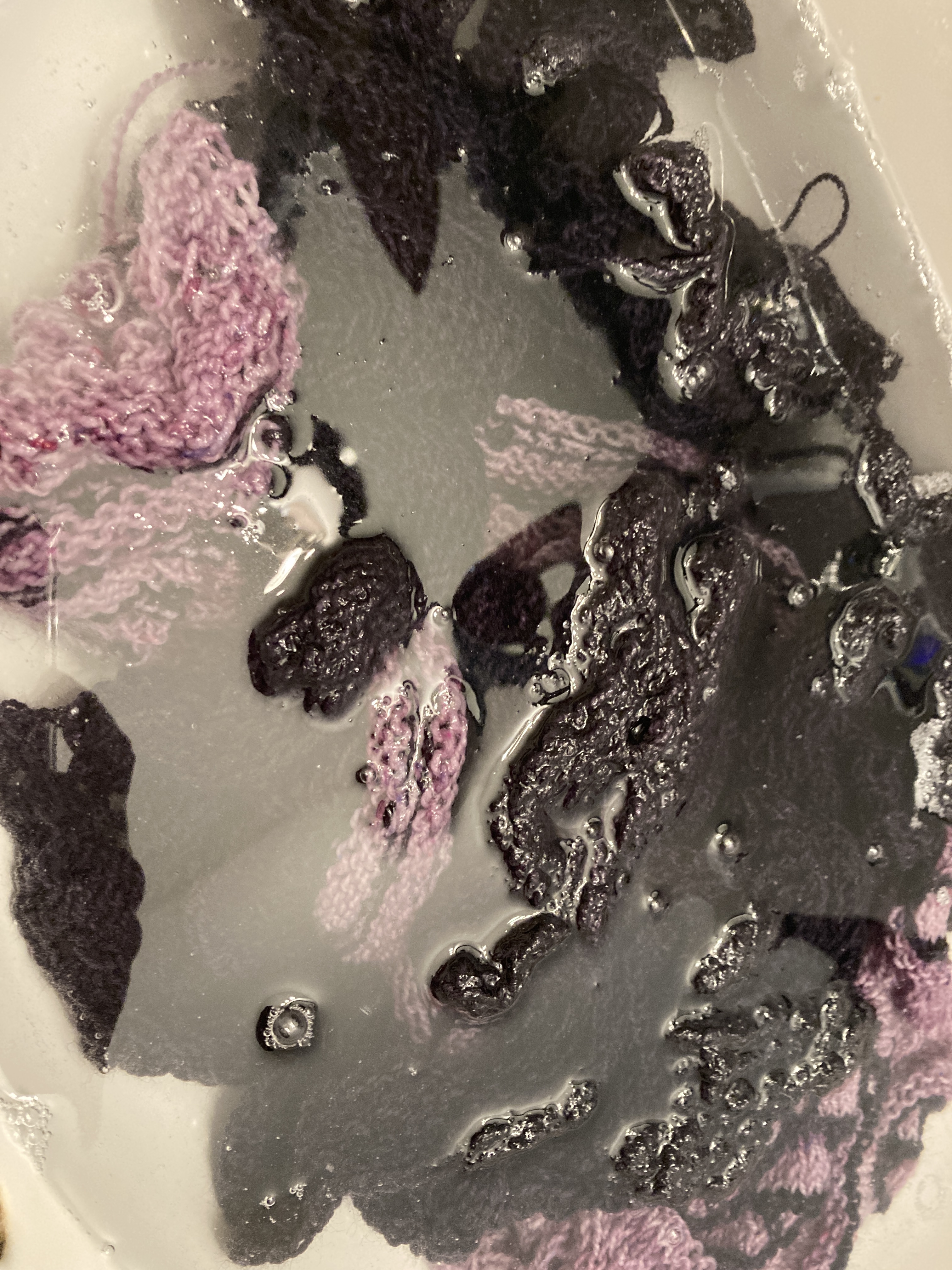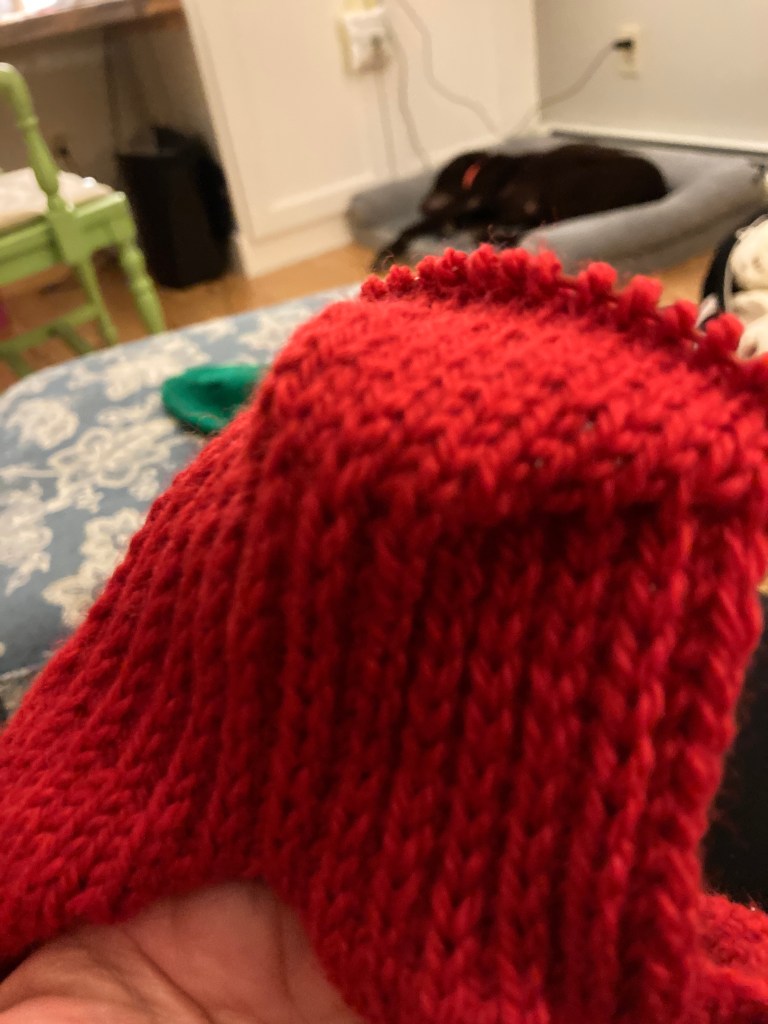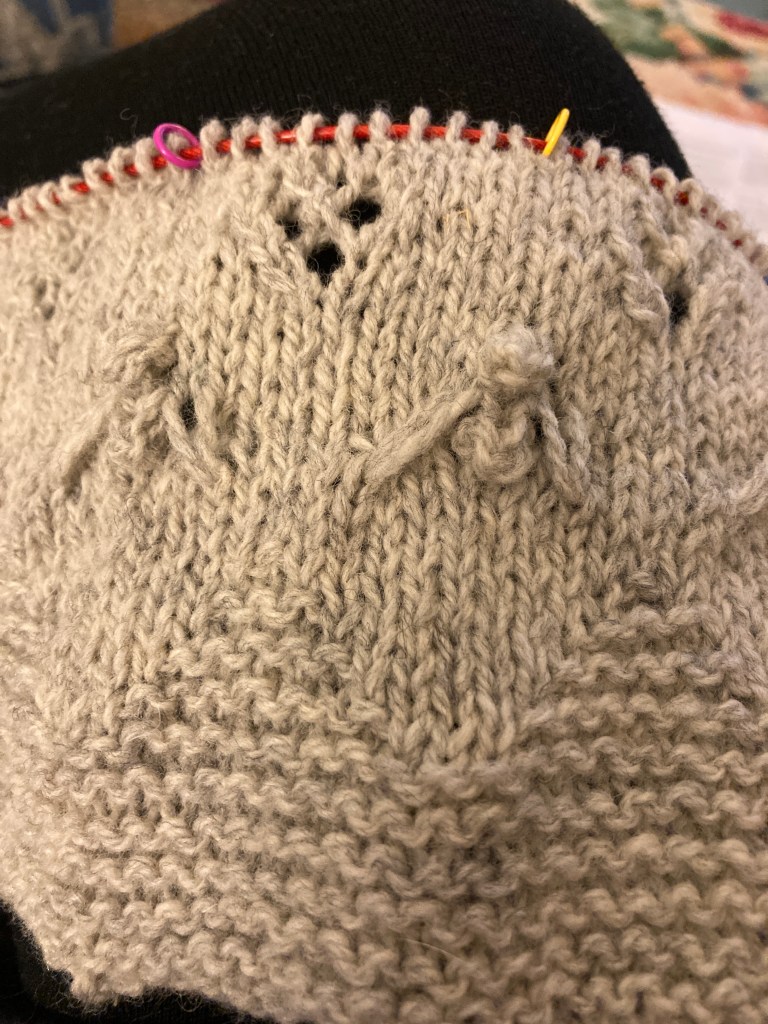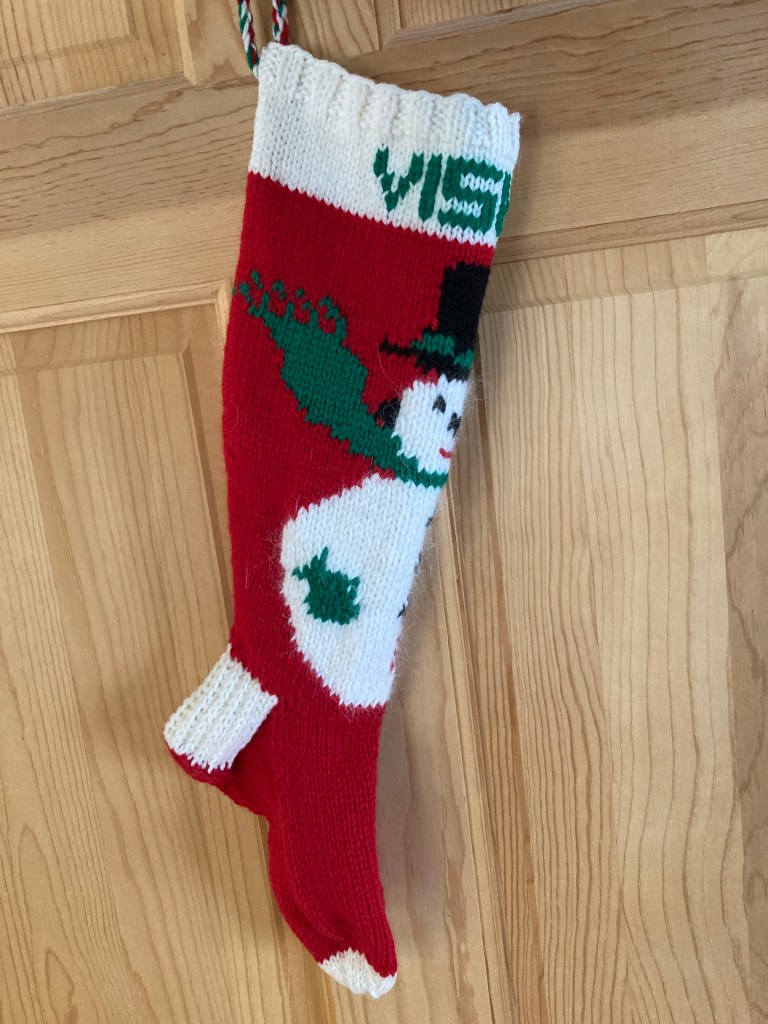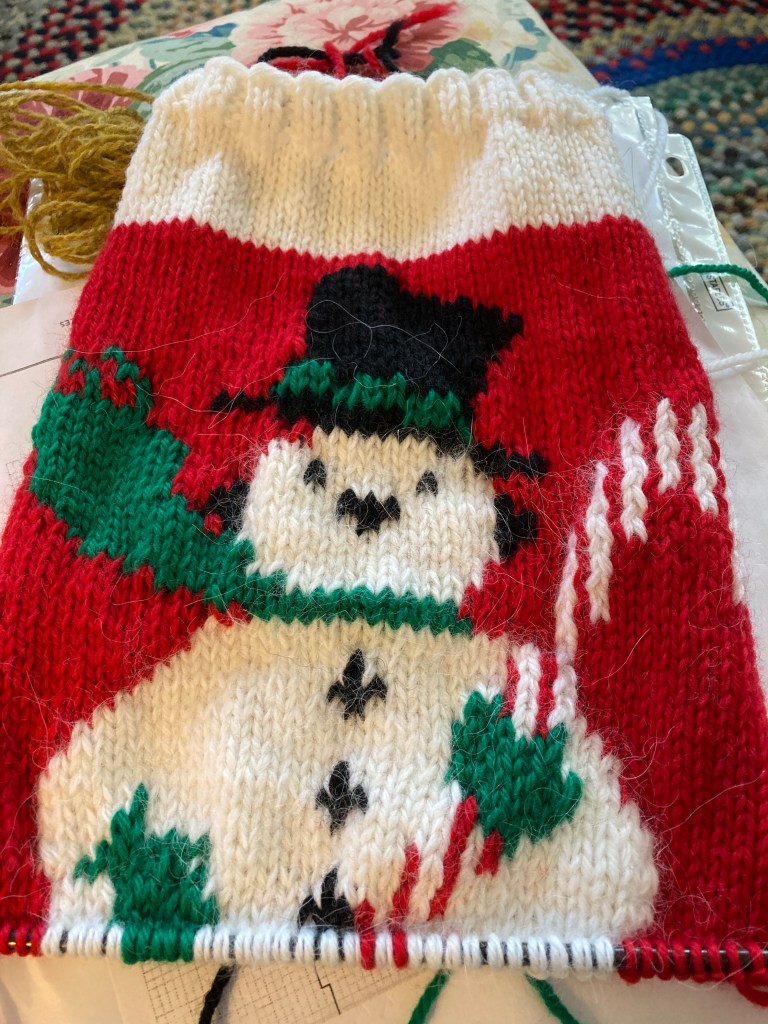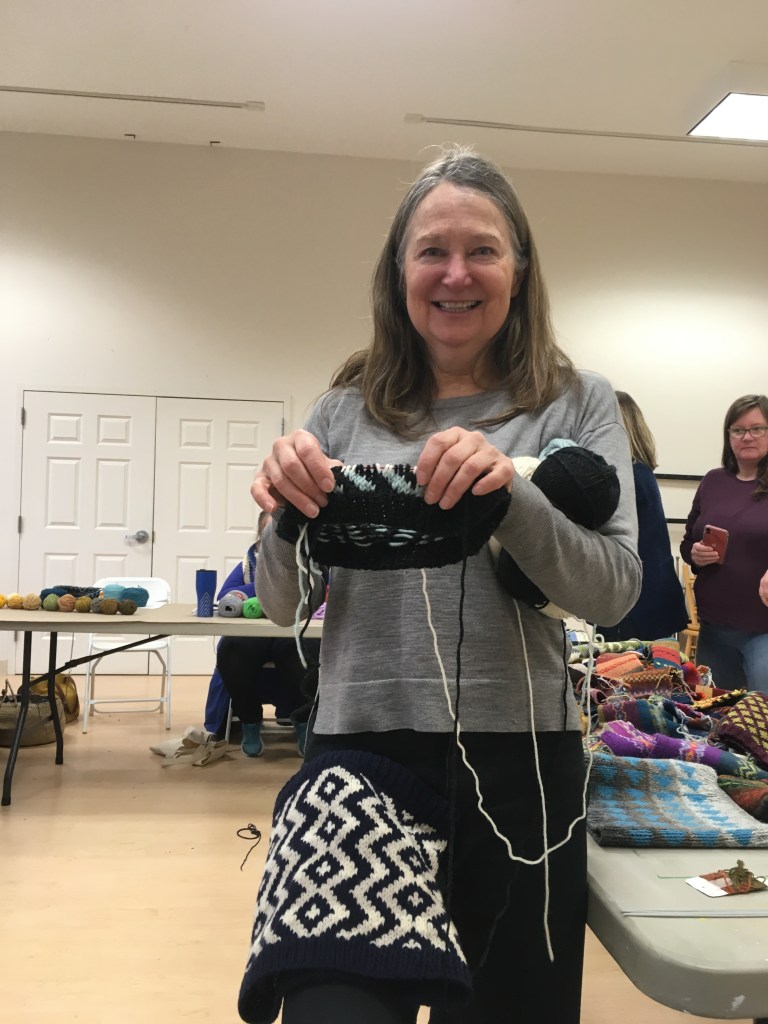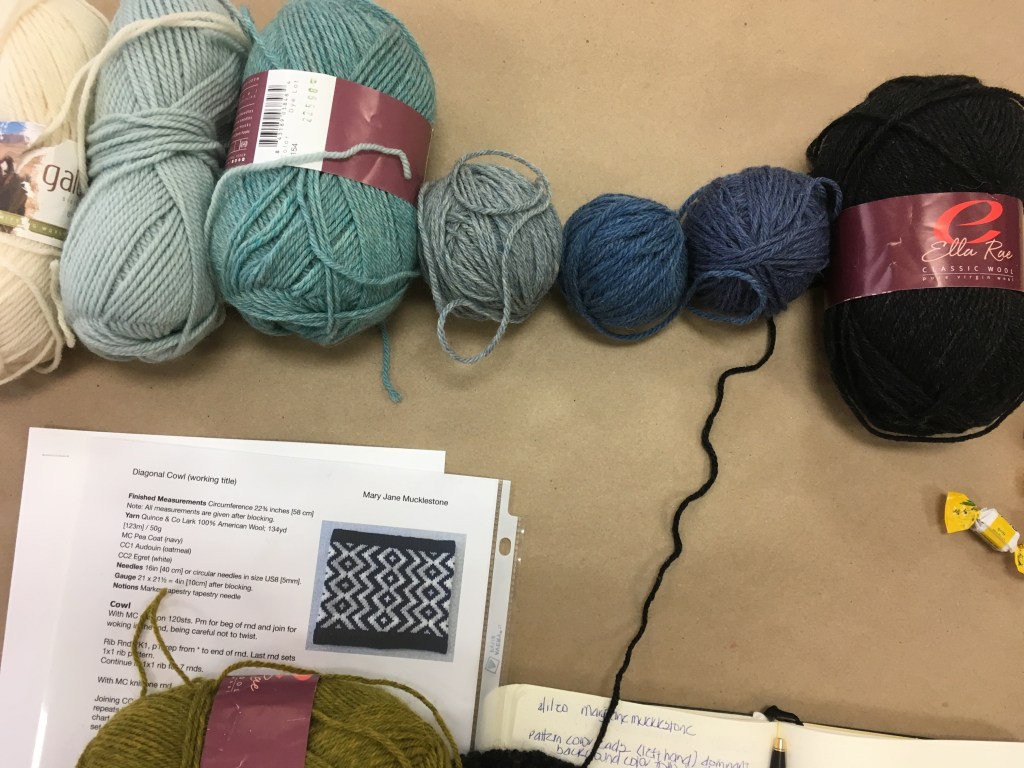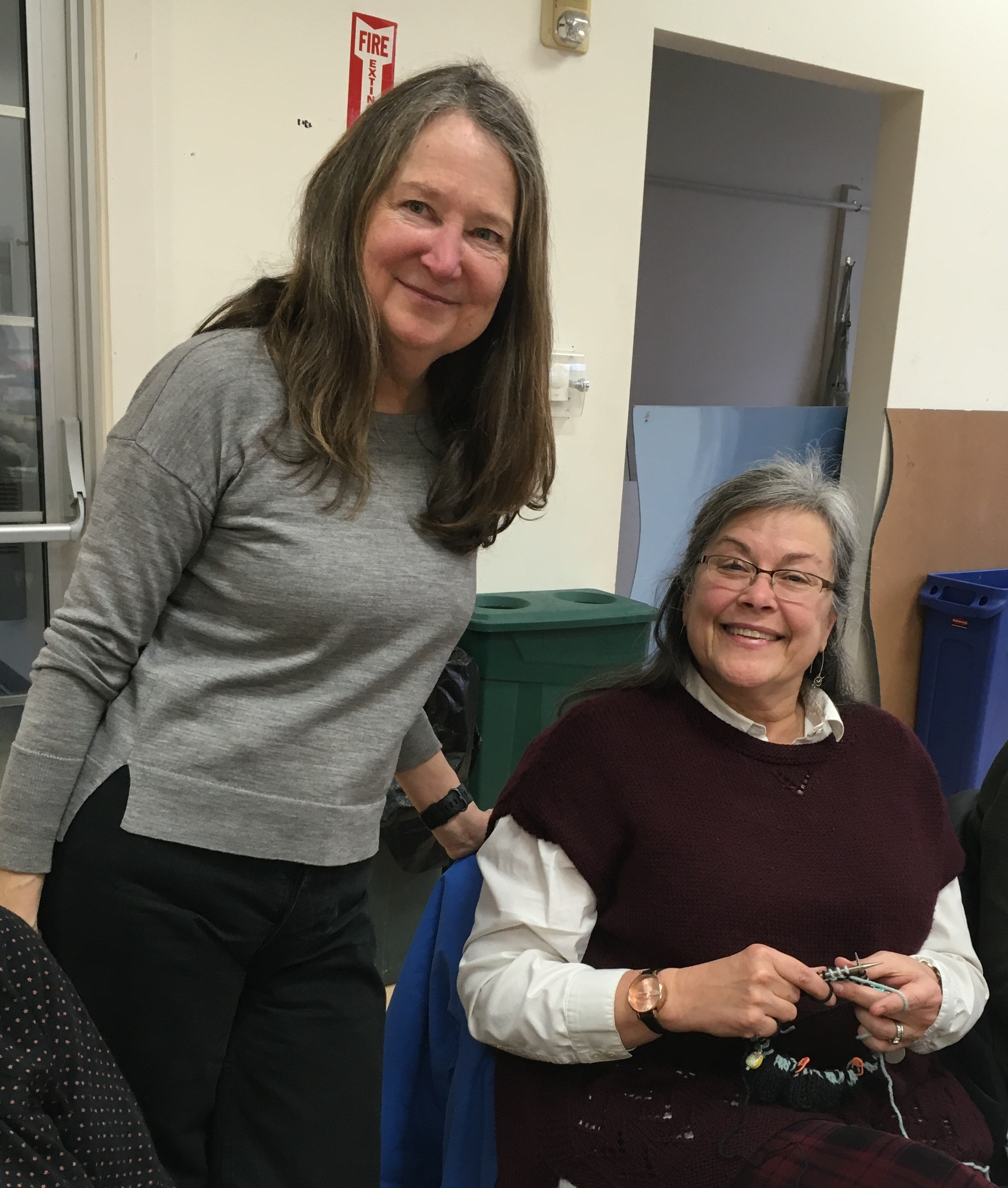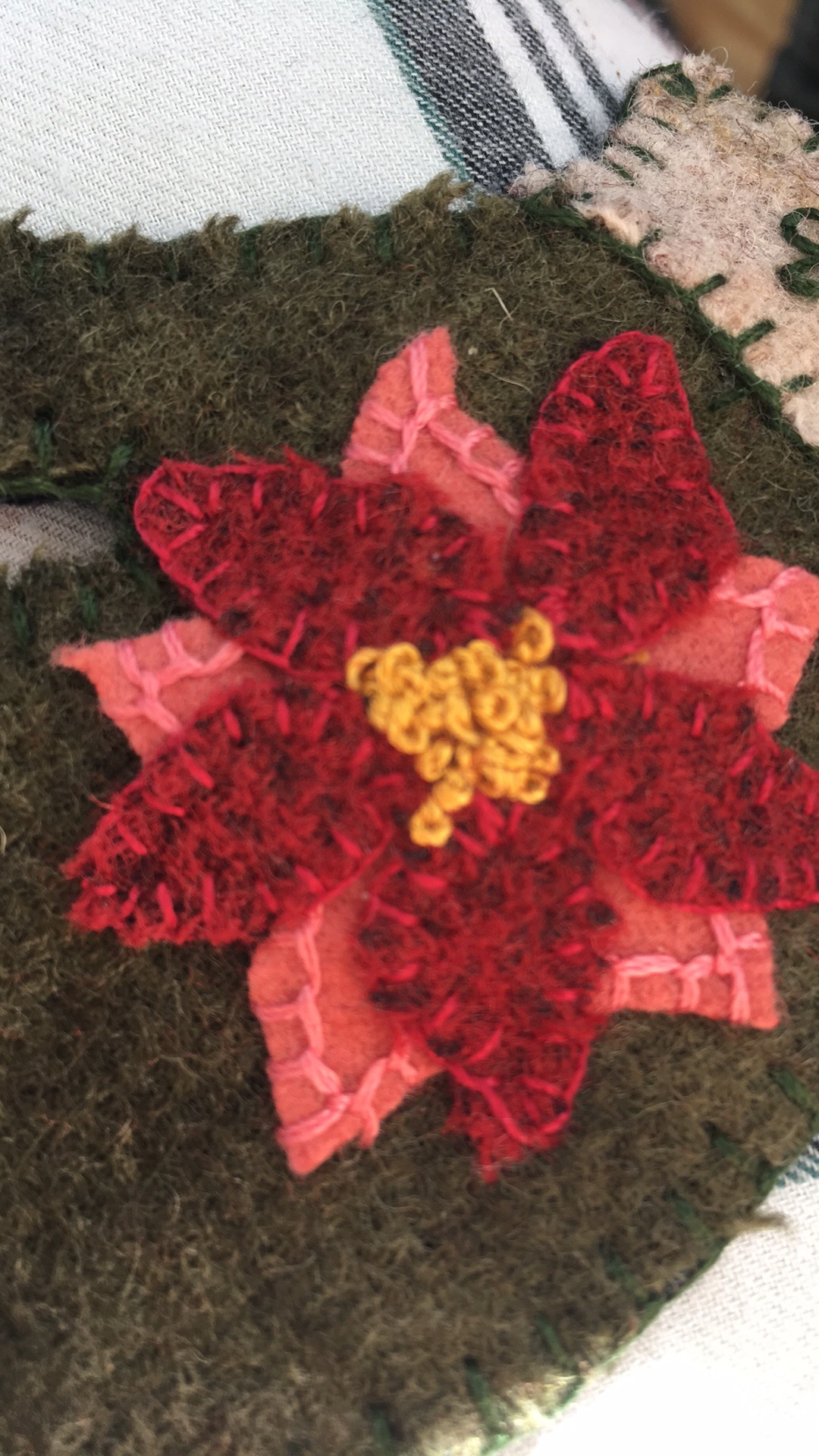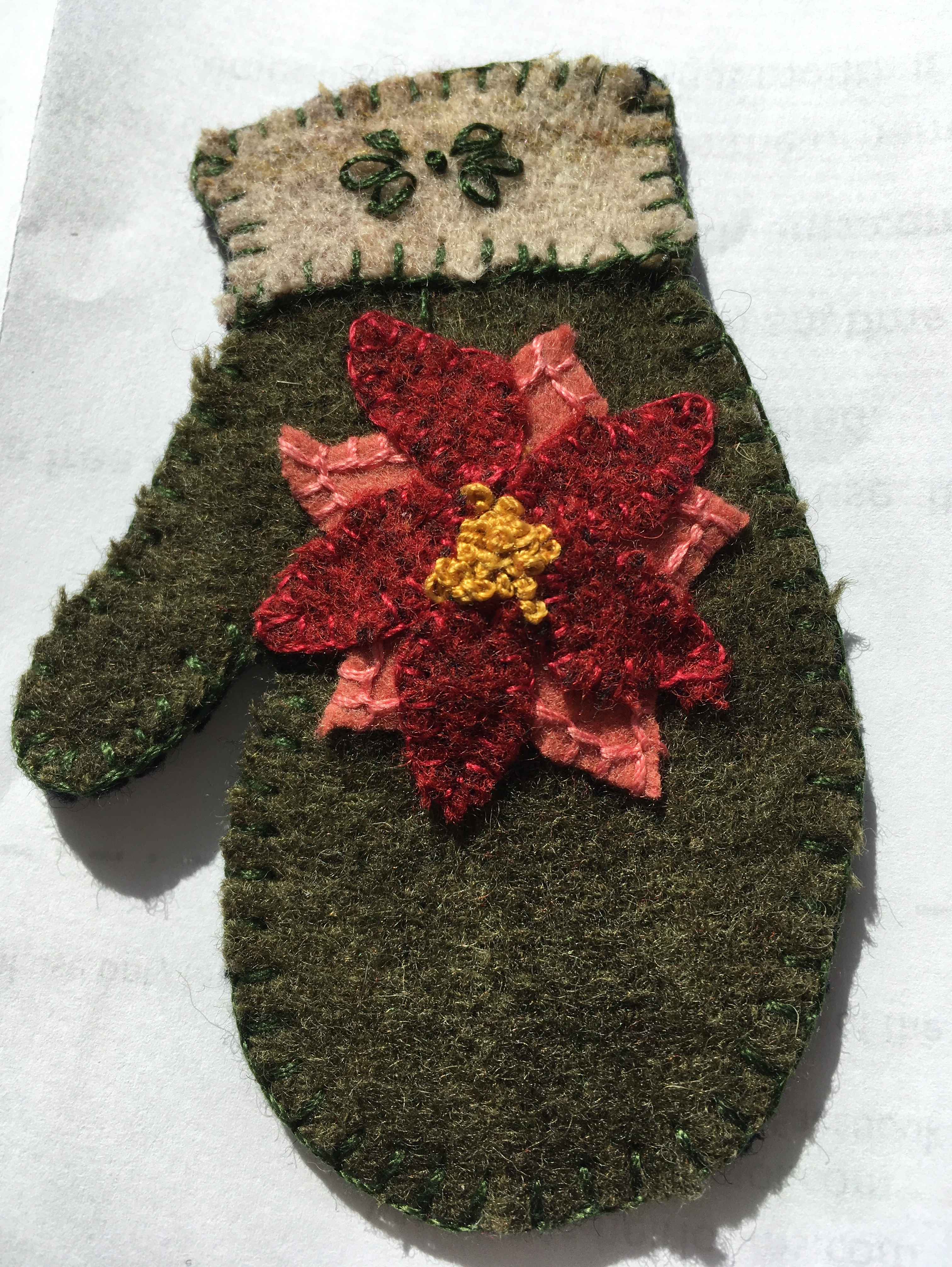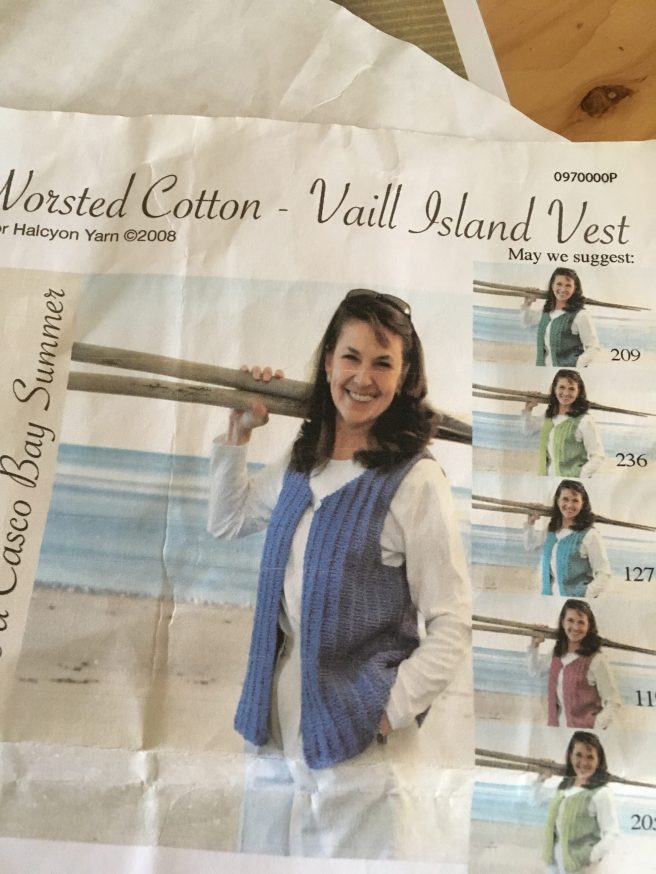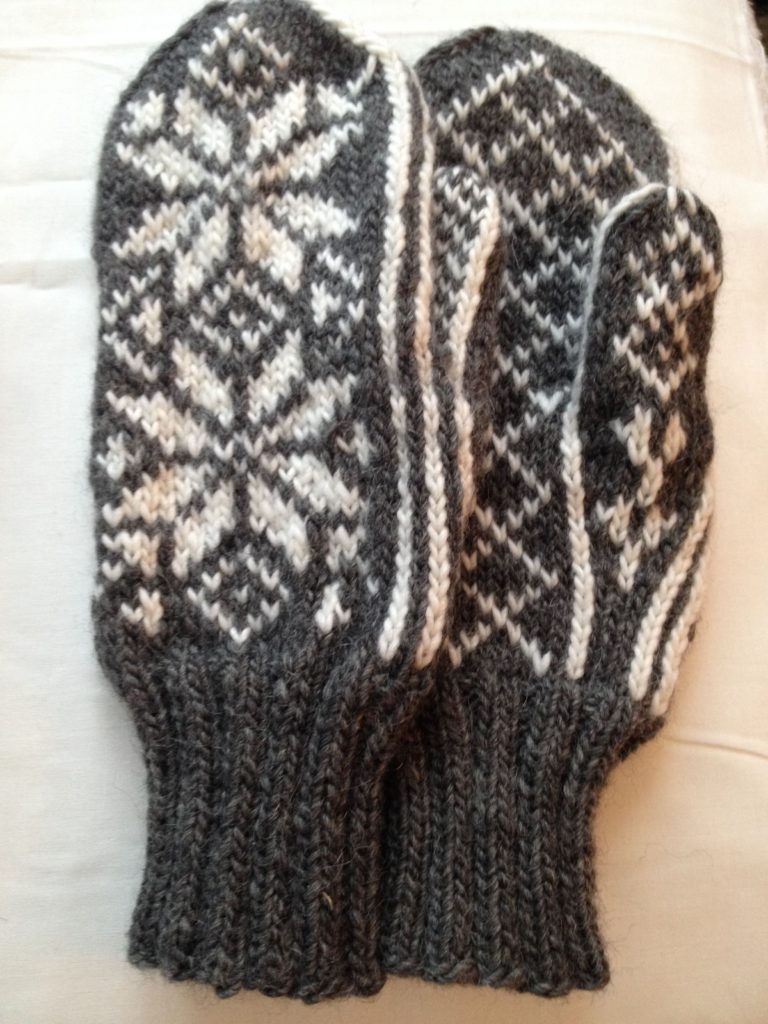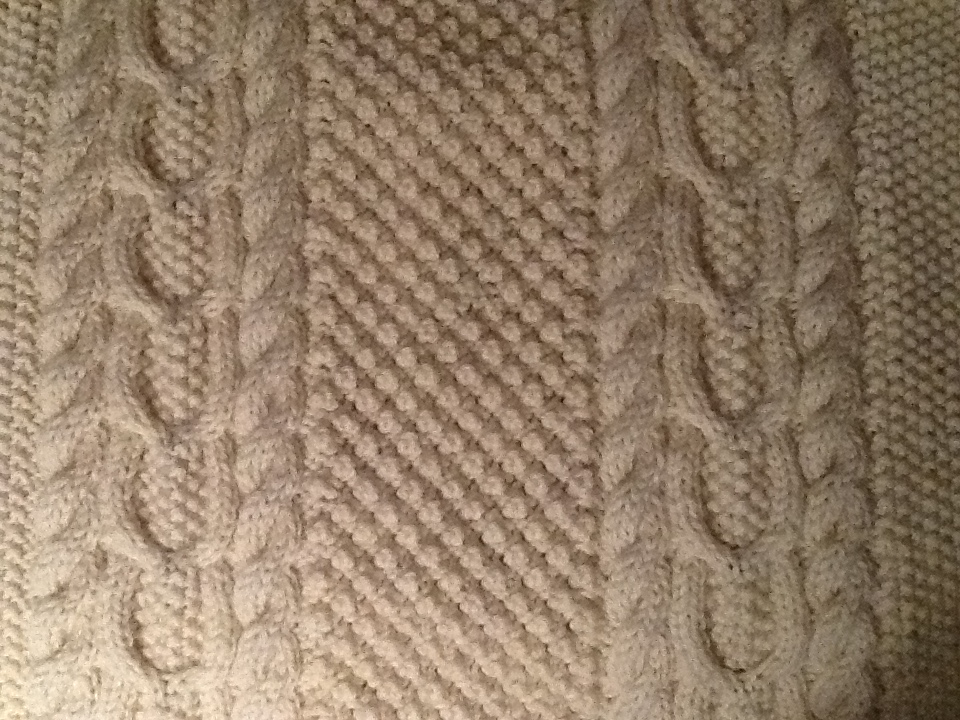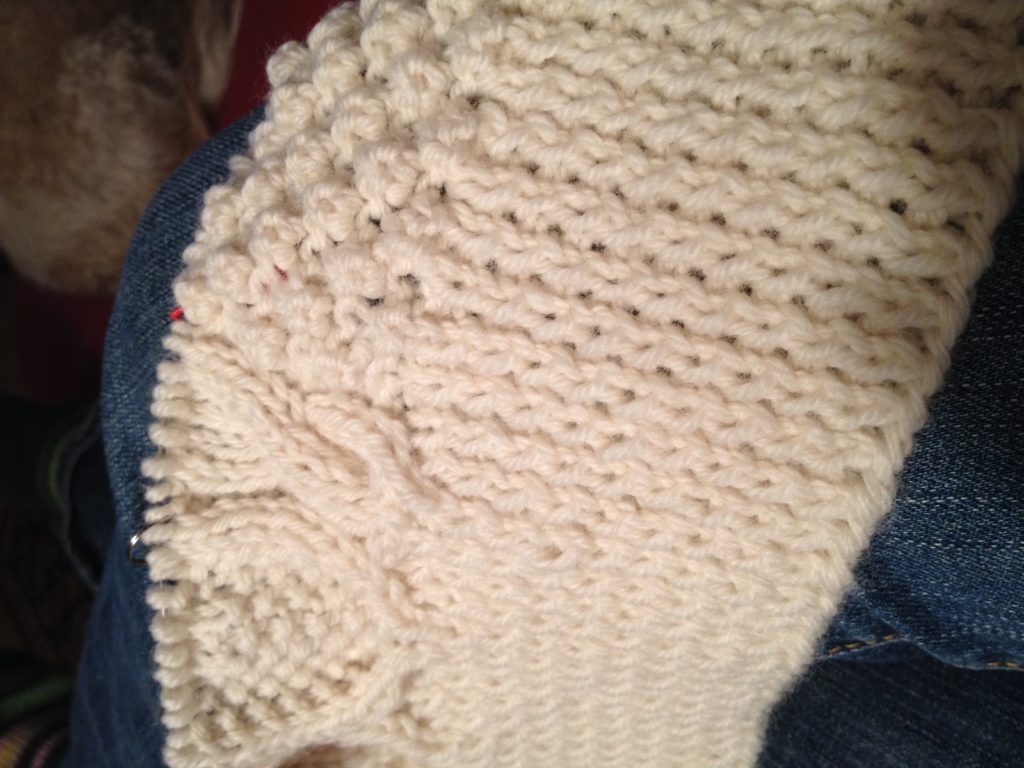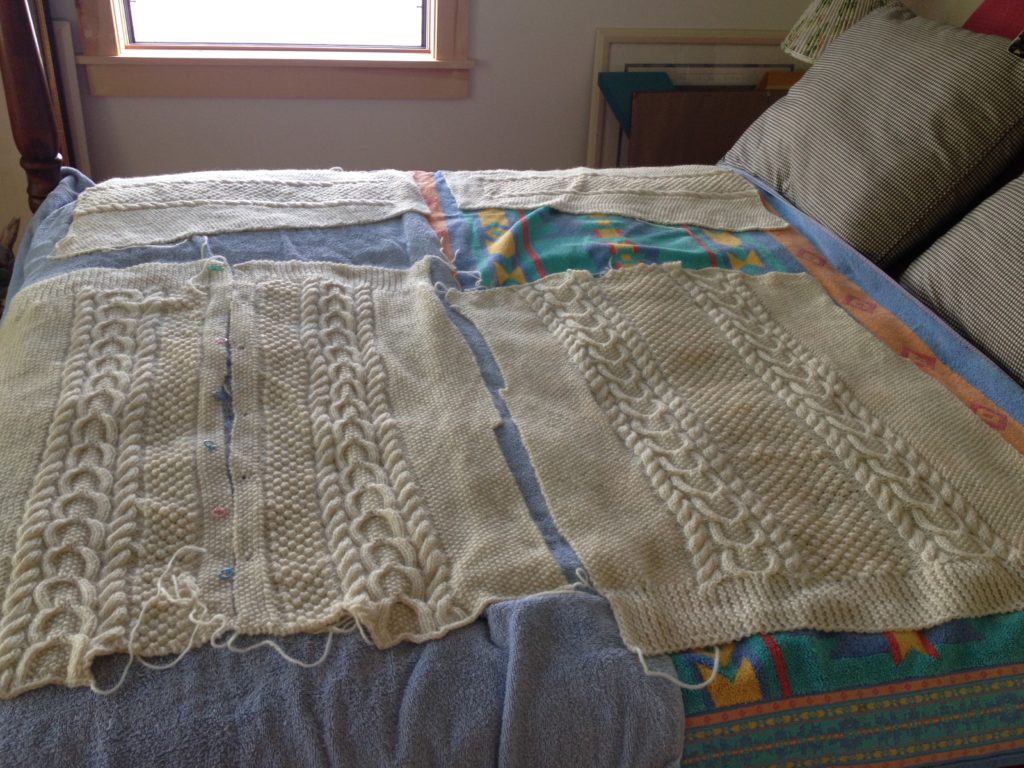
Today is the first of November! Yikes! That makes us 5/6ths of the way through the year 2023. It was a clear cold morning here on the lake and the sky was beautiful. Looking out our bedroom window is always a treat.
I’m going to participate (or at least try) in Wovember which begins today. The month belongs to recognizing wool as a premium textile that comes directly from sheep (and does not harm the sheep to have it removed.) I love wool and choose to knit with a natural wool when possible or practical.
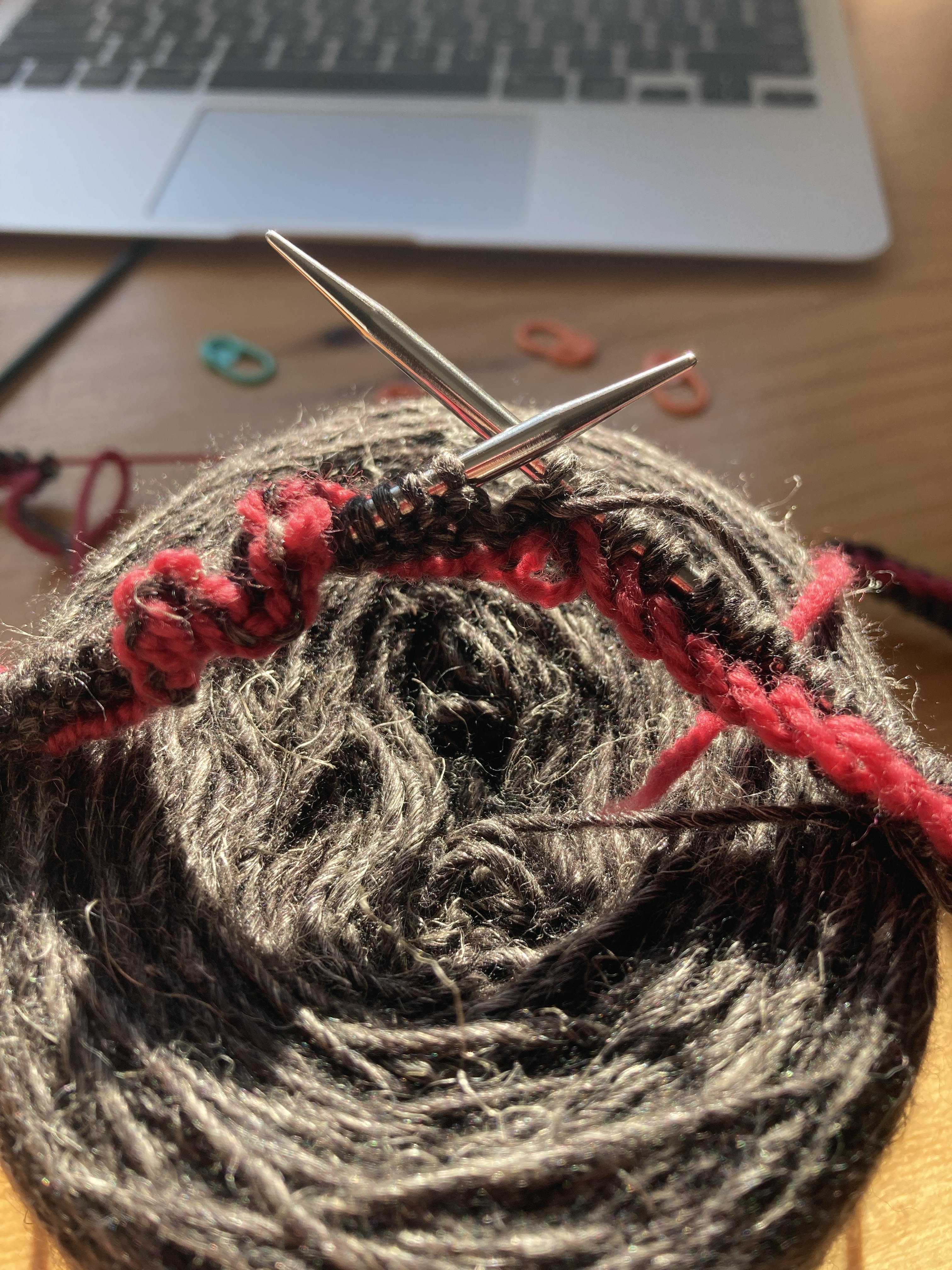
Today I cast on a new project because I’ve got a few that are smaller projects and I need a big one to be accomplished this month. (I’ll be reaching out to a friend to ask her thoughts on how to finish the sleeve on my Favorite genser, too. I’d love to have that off my list and I’m so close!) I’m knitting Nancy’s Vest by Carol Sunday (a paid pattern on Ravelry.) I’ve been wanting a more traditional button-down vest and I think this one will be a perfect one.
This is the second cast on (and the proper one!) I followed Carol’s tutorial for a Tubular Cast On which tells me to cast on half the number of stitches that I need with a backward loop cast on (way easier than a long-tail cast on when you’re casting on 351 stitches) using a contrasting color of yarn. Since I need an odd number, I will round UP to 176 (pink yarn). I want a stretchy cast on because it’s the bottom of my vest and so I started by knitting the right side and continuing in stockinette stitch for two rows. On the fourth row, wrong side, I purl 1 and then bring the yarn forward to knit into the back of the purl bump in the first row knitted with my working yarn (gray). I’ve taken some photos and I hope they help …
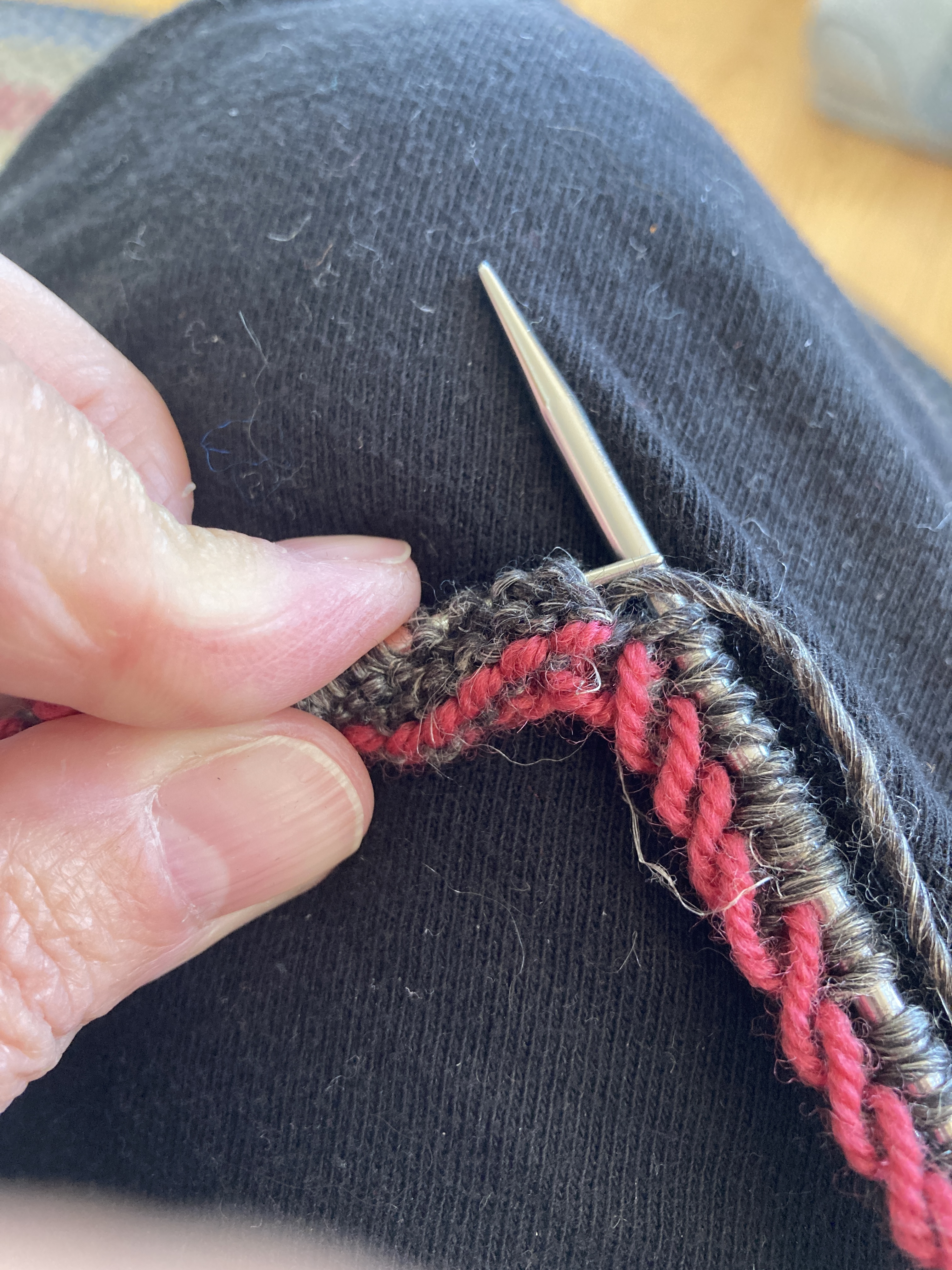


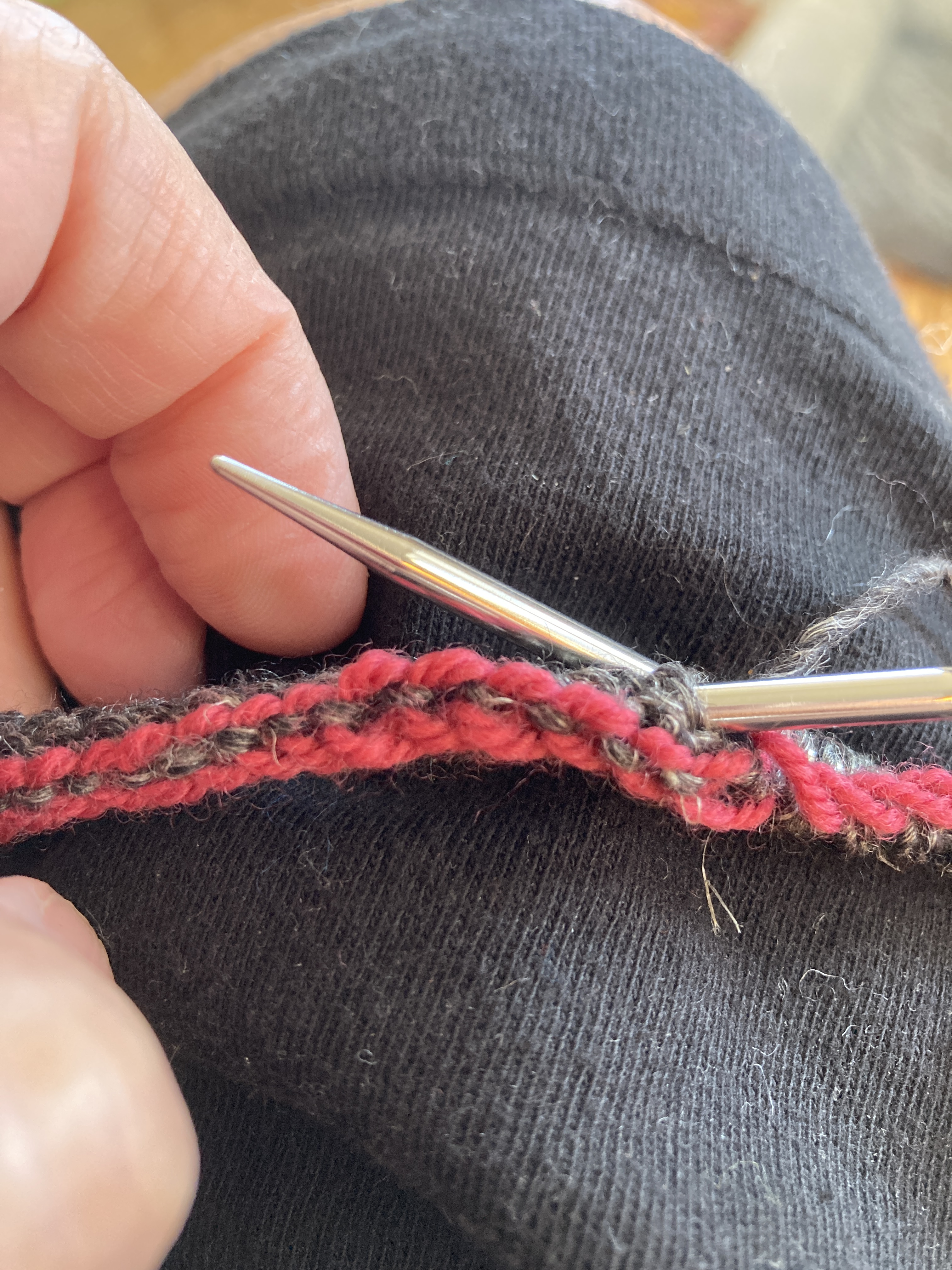
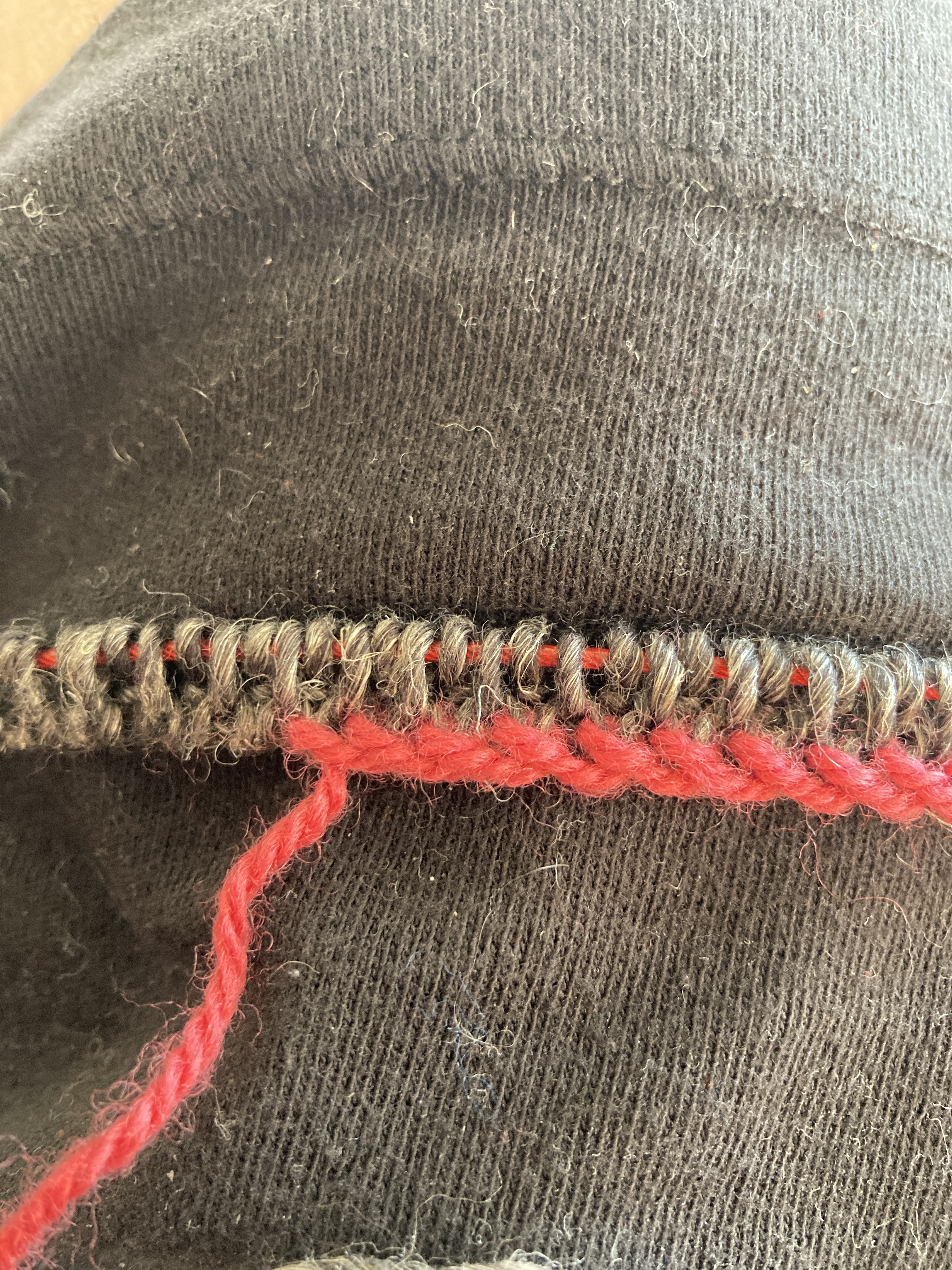
Photo 1 – the first stitch on the left hand needle will be purled … the normal way … and then bring the yarn to the back. The stitches on the right needle have already been worked and I can see the purl bumps from the first knitted row in grey between the pink “lines”.
Photo 2 – We are going to knit into the back of the stitch that is the first round of gray stitches. We will pick it up on the left needle going through the stitch from top to bottom. The gray stitch we are after is found “between” the pink lines, so to speak.
Photo 3 – Picking up the gray stitch from the top to bottom on the left-hand needle and knit it through the back loop. Bring the yarn to the front.
Photo 4 – I’ve knit through the back loop of the picked up stitch. You can see the stitches we’re after (between the pink yarn “rows” really well here. They’re not difficult to pick up but it is a little fiddly.
Photo 5 – Once you work across the row as described above, you remove the pink yarn. I used my blunt tipped sewing needle to grab the pink stitches from the left side to the right side one by one. Another fiddly step but it’s not difficult. Slow and steady wins the race. Note: this is the wrong side of the work.
Now I just have to knit a couple of inches of 1×1 ribbing before I get to the body of the vest.
I’ll post more photos of the finished ribbing when I have a little bit to photograph. The bottom of the ribbing, though, looks like it just started out of nowhere. Lovely!
I’m knitting this vest in Manos del Uruguay’s Milo (65% merino wool, 35% linen). It comes in a 100g hank with 380 yards making it a sport weight. I’m using a US4 needle for the ribbing. Check out my progress on my Ravelry project page. I’m Lindar on Ravelry.
Gone knitting.




